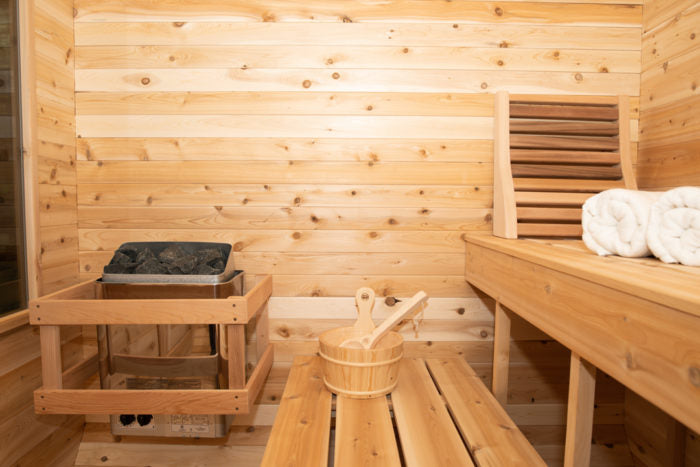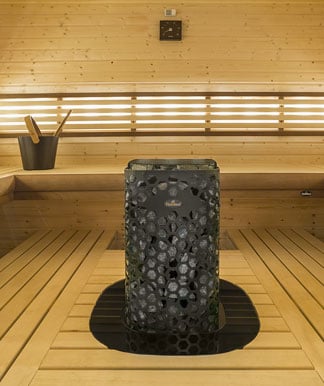The Buzz on Traditional Sauna
Wiki Article
The 4-Minute Rule for Traditional Sauna
Table of ContentsThe Definitive Guide to Traditional SaunaThe Only Guide for Traditional SaunaOur Traditional Sauna Statements4 Easy Facts About Traditional Sauna Described
Most of the weight shed in a sauna is water loss and is re-gained upon rehydrating. Without an uncertainty sauna can be an essential component of a healthy weight loss program. To check out the differences in between typical and IR saunas, I will separate these into proven, academic, and made distinctions.Therefore, the most popular point in the saunawhich goes to the ceiling straight over the sauna heateris commonly between 185 and 190 F. Traditional Sauna. Claims that a conventional sauna exceeds 200 F is simply not true and not appropriate for electrical saunas marketed in the US. The temperature level for a far-infrared sauna is generally set in between 120 and 140 F; nonetheless, unlike the conventional sauna, the objective in and IR room is not to attain a heat
As a result of this, the temperature level distinction is almost irrelevant, because profuse sweating results in both sauna types, however the approach of heating up the body is different. In an IR sauna the bather will feel hot and will sweat a lot, yet at much lower temperature levels. Therefore, if the goal is to spend longer durations of time in the sauna, the IR sauna is a good choice.

The Best Guide To Traditional Sauna
When the high temperature level is accomplished, the aspects cycle on and off to keep the heat. Most standard sauna individuals enjoy pouring water over the rocks to develop heavy steam to elevate sauna humidity degrees. The benefits of putting water over the rocks consist of: making the space more comfortable, dampening the nasal passages, and allowing the usage of aromatherapy by mixing necessary oils with the water.In a far-infrared sauna, the warm waves penetrate the body to successfully heat the body and increase the body core temperature. To achieve this enhanced temperature level, Far-infrared emitters produce infrared power which is close to the same wavelength as that which the body naturally emitsoften described as the "Essential Variety" of 7 to 14 microns), so the energy is well obtained by the body.
When the energy goes into the body, it causes the body temperature to enhance and ultimately causes sweat. In an infrared sauna it is necessary for the emitters/heaters to continue to be on almost constantly. Considering that there is no mass of rocks to maintain warm, the sauna why not try here will certainly cool if the emitters shut down.
As stated above, the sauna bather in an infrared area wishes to position himself in front of running emitters to get maximum gain from the warm. The home heating time for the two areas can be very different, depending on exactly how the areas are made use of. For a standard sauna, a bather must allow 30-40 minutes for the area to achieve a desired temperature level and to properly pre-heat the rocks.
The Best Guide To Traditional Sauna
A well created sauna will commonly accomplish a temperature of 150-160 F in regarding 30-40 minutes. For hotter temperature levels, the room may require to advice heat for a longer duration.To some, 15 mins was "lost" while the infrared energy warmed the wood panels instead of heating up a body, while others locate a pre-heated room to be extra comfy and think an elevated starting temperature level is essential to start sweating. The size of advised use for every area is about the exact same (10-15 mins per session); nonetheless, due to the lower air temperatures and the capacity to really feel the effects of infrared warmth faster than a conventional sauna, it is not uncommon for an individual to spend an overall of 20-30 minutes in an infrared sauna.
Standard saunas tend to be larger (therefore make use of more electrical power) than infrared saunas, although traditional saunas are certainly offered in one and 2 person sizes. For a two-person conventional sauna, 5x6 or 5x7 size is most preferred. The leading bench can comfortably seat two or 3 individuals and is likewise enough time to rest during the sauna session.


The ordinary expense per kWH of electricity in the U.S. is about $0.11, so a 4.5 kW heating system will certainly cost around $.50 to run for one hour, if the heating system runs continually for one hour. Usually a sauna heater will certainly compete 75% of the helpful hints initial hour and 50% of succeeding hours on because the components cycle once the set temperature level is attained.
Top Guidelines Of Traditional Sauna
A 2 person far-infrared space is typically literally smaller than a typical sauna, usually about 4' x 4' or smaller. The IR heater is usually 1.5-1.7 kW making use of a 120 volt 15 amp plug-in solution. Since the space can be utilized earlier than a sauna room, we will certainly presume the room is used for to of an hour consisting of warm up time.There is a seldom reviewed difference in the social experience between the two spaces. While our culture has lost some of the social benefit of the traditional sauna experience, it can be very socially satisfying. From family members time in the sauna, to heart-felt conversations with better halves, to sauna partiesthe typical sauna experience can lead to intimate mingling.
The majority of greater end infrared rooms consist of colored light treatment, audio systems and full-glass fronts.
Report this wiki page